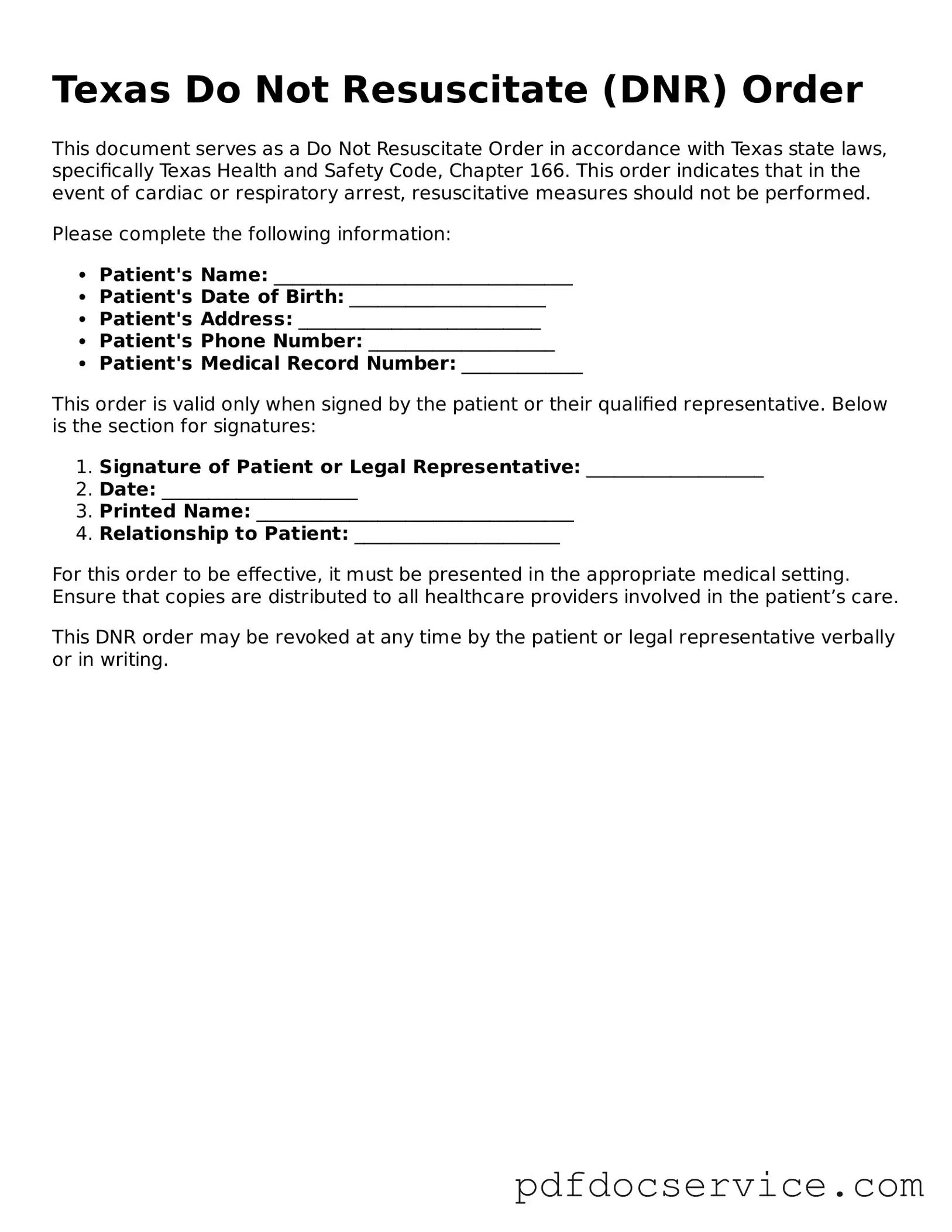A Texas Do Not Resuscitate Order (DNR) form is a legal document that allows individuals to express their wishes regarding resuscitation efforts in the event of a medical emergency. This form specifically instructs healthcare providers not to perform cardiopulmonary resuscitation (CPR) if the individual’s heart stops or they stop breathing. It is essential for ensuring that a person's end-of-life preferences are respected.
In Texas, any adult who is capable of making informed medical decisions can complete a DNR form. This includes individuals who are 18 years of age or older. Additionally, a parent or legal guardian may sign the form on behalf of a minor. It is important that the individual understands the implications of the DNR order before signing.
To create a DNR form in Texas, the individual must fill out the official Texas DNR Order form. This form can be obtained from healthcare providers, hospitals, or online through the Texas Department of State Health Services. After completing the form, it must be signed by the individual and a physician. The physician’s signature confirms that the individual has the capacity to make this decision and understands its consequences.
Yes, a Texas DNR form is valid in various healthcare settings, including hospitals, nursing homes, and home care. However, it is crucial for the form to be readily accessible to healthcare providers. Individuals should keep copies of the DNR order in places where they can be easily found, such as on the refrigerator or with other important medical documents.
Can a DNR order be revoked?
Yes, a DNR order can be revoked at any time by the individual who signed it. To revoke the order, the individual should destroy the original document and inform their healthcare providers of the decision. It is advisable to provide a written notice of revocation to ensure that all parties are aware of the change in the individual’s wishes.
What should individuals discuss with their healthcare providers regarding a DNR order?
Individuals should have open discussions with their healthcare providers about their health status, prognosis, and the implications of a DNR order. Important topics may include:
-
The individual’s overall health condition
-
Potential outcomes of resuscitation efforts
-
Alternative treatment options
-
Personal values and preferences regarding end-of-life care
These conversations can help ensure that the DNR order aligns with the individual’s wishes and medical needs.
Individuals seeking more information about DNR orders in Texas can visit the Texas Department of State Health Services website or consult with healthcare providers. Additionally, legal resources and local advocacy groups may offer guidance and support regarding advance care planning and DNR orders.
